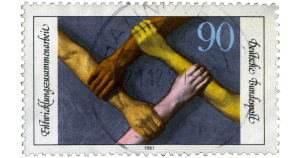
Merriam-Webster defines diverse as:
- Differing from one another: unlike < people with diverse interests >
- Composed of distinct or unlike elements or qualities: < a diverse population >
Most employers and employees agree that diversity in the workplace is a very good thing, as is Diversity and Inclusion Training. But how can an employer maximize creativity and productivity after achieving a diverse work force? Answer, stop talking so much about employees’ differences and instead focus on employees’ similarities. Place greater emphasis on the Inclusion part. Form a cohesive unit committed to accomplishing the mission.
For many years, pundits and trainers have been stating and reiterating that we should welcome diversity in the workplace. Okay, we get it. But why are we pointing out differences that tend to divide us – if only implicitly — rather than discussing similarities that bind us? Diversity Training emphasizes that we are different rather than similar, and it can make some employees feel like outsiders. No matter how slick the presentation or trainer might be, the apparent message is that, “You will accept differences…or else!” Even worse perhaps is the subliminal message that comes from Diversity Training is that “people with diverse interests” cannot really function as a team. Mission un-accomplished!
Diversity and Inclusion Training has value. However, we encourage employers to concentrate on exploring and discussing the things we have in common and build on that (e.g. LeBron James is overrated). We call this training “Cohort Connection.” © This type of training, or self-exploration, forces us all to dig deep within to find traits that we share with other people. In this process, for example, Joe Johnson discovers that he and Ali Siddiqi share many of the same characteristics, dislikes and likes. More things connect us than divide us, and these are the qualities that we should be discussing.
Connection, not Distinction
We realize that some people just want to be different from other people, and nothing we say will change their minds. But for those of you who want to connect and be inclusive, let’s start at ground zero for humanity. The science is fairly settled that all contemporary human DNA can be traced back to an African female who lived about 150,000 years ago. Scientists call her “Mitochondrial Eve.” Hello mother! Then, our ancestors spread over Europe and Western Asia, finally making their way to the great state of Texas. What a great starting point to bond with another person. We all share the same DNA, and there is scant genetic diversity among all living people! See, even our DNA rejects the notion of diversity.
“Yeah, but what about our cultural and religious differences?” No doubt, we all like and dislike dissimilar things. However, let’s focus on our similarities, whether these be likes or dislikes. For example, at Cohort Connection, I discuss how I love to cook Coach Steve’s Chili for family and friends. But I get really irritated by the annoying, greedy family members who show-up uninvited and unannounced after hearing on social media that I’m cooking. This is the point where a real conversation begins with another training attendee/co-worker, Sarah, whom I’ve never really known before. Why? Because most people have a family, most people like to socialize in some manner, and every family has freeloaders looking for a free meal. Sarah has a parasitic uncle, and we begin to bond over this humorous similarity, which has a positive ripple effect in the room. Ideally, the conversations and interactions among many participants continue long after the training has ended. Actual inclusion; imagine that!
I invite everyone to send questions or comments on this blog. Please visit our website at www.bashencorp.com for more information about Bashen Corporation’s EEO services and its patented EEO Claims Management software, LinkLinePlus.